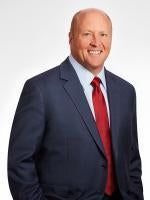In a much anticipated decision, the U.S. Supreme Court in Bilski, et al. v. Kappos, 561 U.S. ____ (2010), held that a claim to a method of hedging against price fluctuations is unpatentable. The narrow majority opinion relied upon the Court’s precedent prohibiting the patenting of abstract ideas. However, the Court refused to hold that so-called “business methods” are always unpatentable. The Court also indicated that the “machine or transformation” test established by the Federal Circuit Court of Appeals in 2008 is not the sole test for determining whether subject matter is eligible for patent protection. The ruling has particular implications for the financial services, software, and biotechnology industries.
In a 2008 ruling, the Federal Circuit held that to be patentable, a process must either be implemented by a machine or transform a physical object, material or data that represents a measurable quality or a physical object. By rejecting the “machine or transformation” test as the exclusive test for deciding what qualifies as patentable subject matter, the Supreme Court broadened the scope of patentable inventions previously restricted by the Federal Circuit. Although the Supreme Court failed to provide a bright line rule, some guidance can be gleaned from the Court citing its own precedent that “Congress plainly contemplated that the patent laws would be given wide scope” and that “ingenuity should receive a liberal encouragement.”
The Bilski case arose from a 1997 patent application by Bernard Bilski claiming a method to offset risks in commodity trading. The claimed invention did not require Bilski’s method to be carried out using a computer or machine. In other words, if issued, a patent on Bilski’s method could be infringed simply by carrying out the steps mentally or using a pencil and paper. The U.S. Patent and Trademark Office (“the PTO”) rejected Bilski’s patent application for claiming non-patentable subject matter. Bilski appealed directly to the Federal Circuit and, in February 2008, the court granted an en banc hearing, in which all twelve judges on the circuit participate instead of the usual three-judge panel. Following the Federal Circuit opinion, the Supreme Court granted review and held oral arguments in November 2009.
The Supreme Court Bilski’s decision was announced on the last day of Justice Stevens’ tenure on the Court. Justice Stevens wrote a concurring opinion explicitly stating his opinion that “business methods are not patentable.” Although this was not the opinion of the Court, three additional Justices joined his opinion.
The implications of the Bilski decision remain to be seen. While the Court held that the “machine or transformation” test is not the exclusive test for patentability of process inventions, it left unclear what business method claims would be patent eligible and how to ensure business method claims do not patent “abstract ideas.” For this reason, drafters of patent applications for business methods and software-related inventions should continue to consider the use of claims that would pass muster under the “machine or transformation” test. These claims should be supported by a detailed description that clearly identifies the technology connected to process claim steps. Even though the “machine or transformation” test is not the exclusive test, inventions that pass this test will most likely be patent eligible.


 />i
/>i

